The Esri User Conference is the largest gathering of GIS professionals in the world—and this year’s event is packed with exciting updates, insightful presentations, and hands-on learning opportunities for anyone working with spatial data. Whether you’re a seasoned geodatabase administrator, a data engineer exploring cloud integration, or just getting started with ArcGIS, there’s something for everyone.
In this blog, we’ve curated a list of key sessions focused on spatial data management, including topics like geodatabase design, enterprise workflows, cloud data integration, and the latest in ArcGIS Data Pipelines. You’ll also find links to supporting materials to help you dive deeper into each topic.
Join us in San Diego—or tune in virtually—to explore how you can optimize your data workflows, improve data quality, and make the most of your ArcGIS investment.
If you’re attending in person, be sure to stop by at the expo area to connect with our team. We’ll be at the ArcGIS Enterprise area, where you can ask questions, get help with troubleshooting, and chat with product engineers. To make it easier to find us, here is a map of the Expo floor in this blog—just look for the Geodatabases booth!
Showcase hours
Tuesday, July 15 | 9:00 AM – 5:00 PM
Wednesday, July 16 | 9:00 AM – 5:00 PM
Thursday, July 17 | 9:00 AM – 4:00 PM
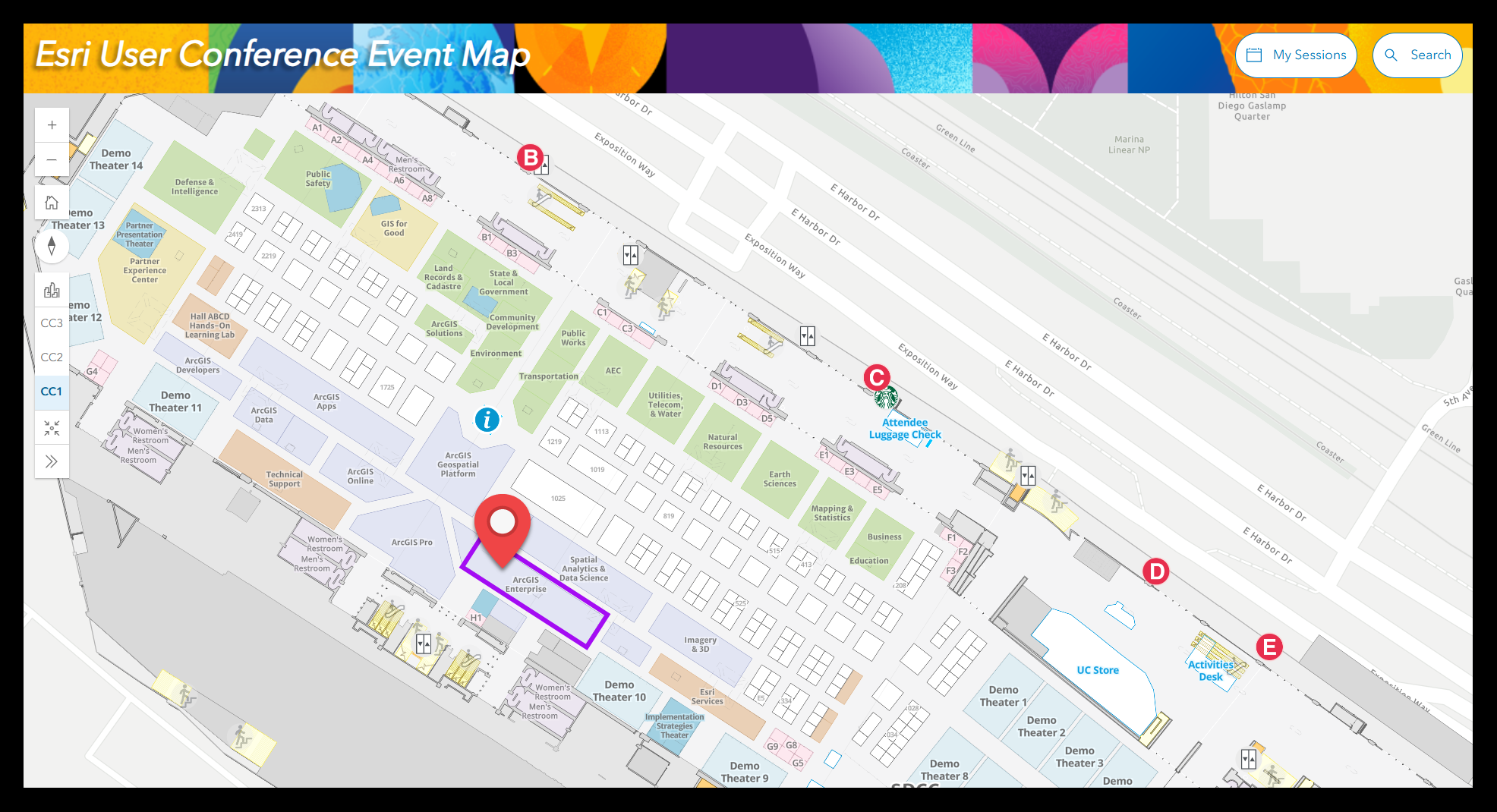
Can’t make it to every session? No problem. Many of the presentations will be recorded and made available after the conference. You’ll be able to access them through the Esri Events platform or the Esri UC 2025 event page, so you can catch up on anything you missed at your own pace. You can also check out sessions from the previous years on Esri Media Space.
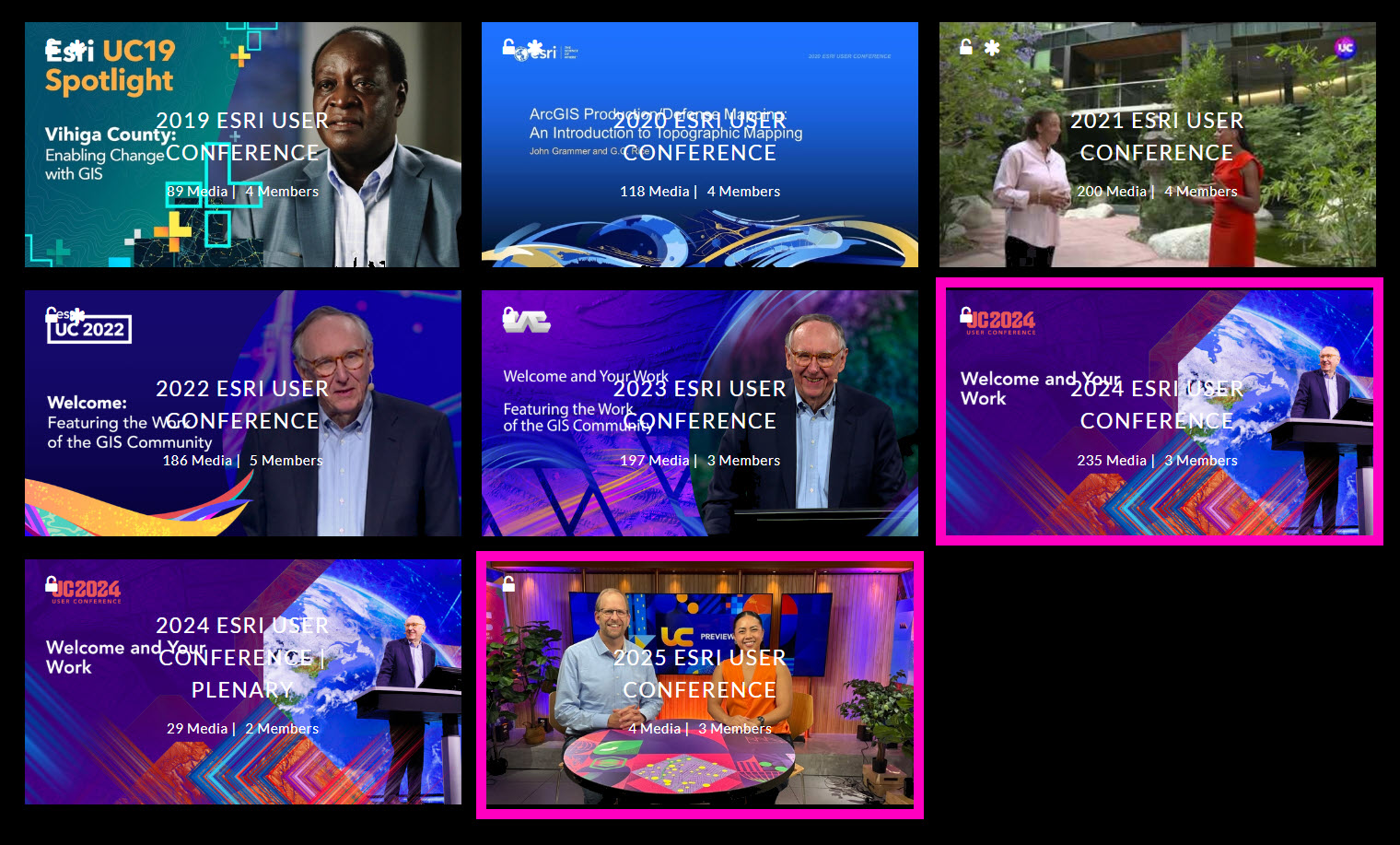
Now let’s go over the sessions. Here’s a look at the key sessions for spatial data management you won’t want to miss, along with helpful resources to support your learning before, during, and after the conference.
The Geodatabase: An Overview
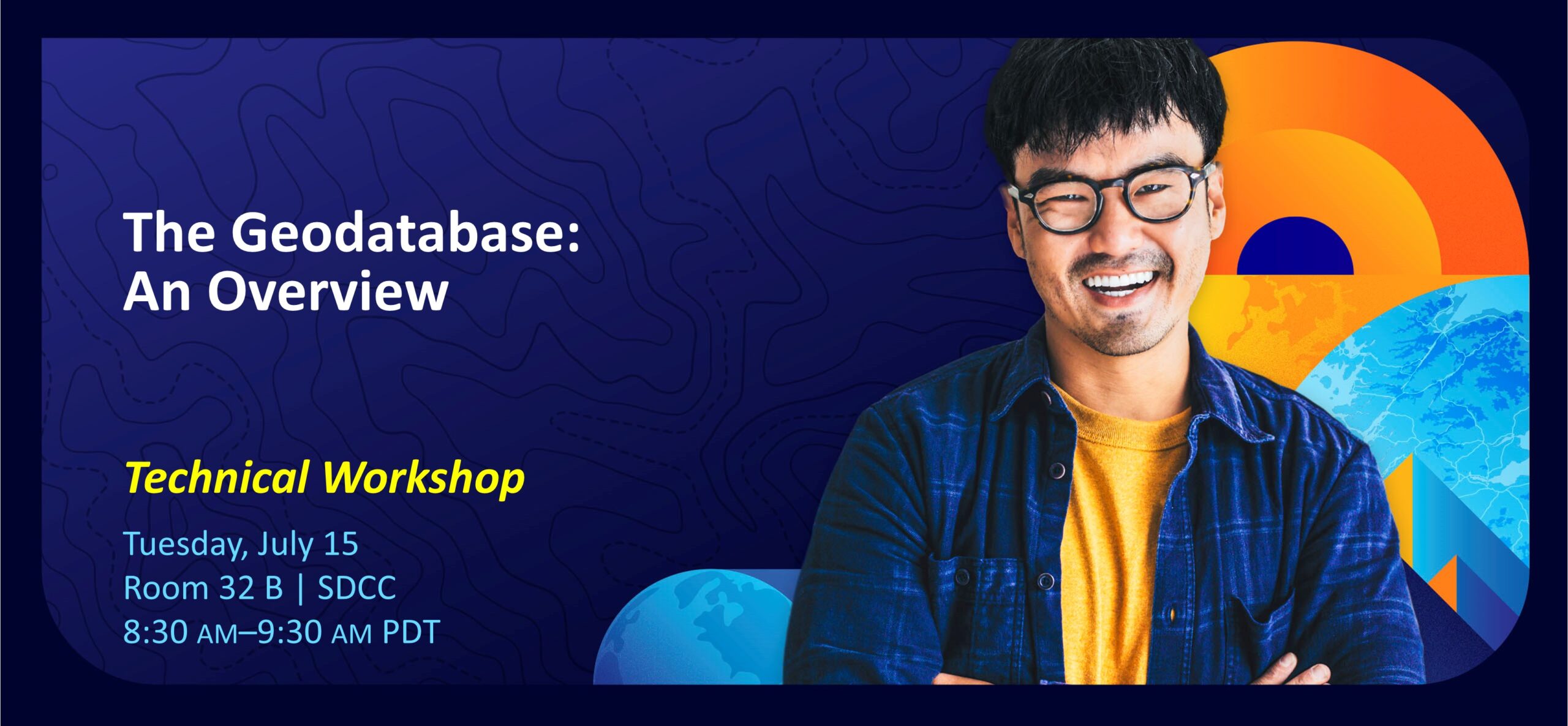
Have geodatabase questions? Learn all about this key data storage and data management framework for ArcGIS, and explore the aspects of the geodatabase information model that enhance your data with spatial and relational integrity rules, data validation, business logic, and advanced behavior.
Speakers: Mihail Kaburis, Matthew Mallon
Supporting materials:
- Getting Started with the Geodatabase – web course on Esri Academy
- Look at Mobile Geodatabases go! – An introduction – blog article
- Apply subtypes and domains to Vienna hiking trails – tutorial
- Assess urban tree health using contingent values – tutorial
- Improve campsite data quality using a relationship class – tutorial
- Create domains and contingent values from existing data – blog article
- Improve data quality with Attribute Rules – tutorial
- Use geodatabase topology for ecomobility – tutorial
- Maintain data accountability with editor tracking – blog article
- Create your own geoprocessing tool to download attachments – blog article
Authoring Attribute Rules
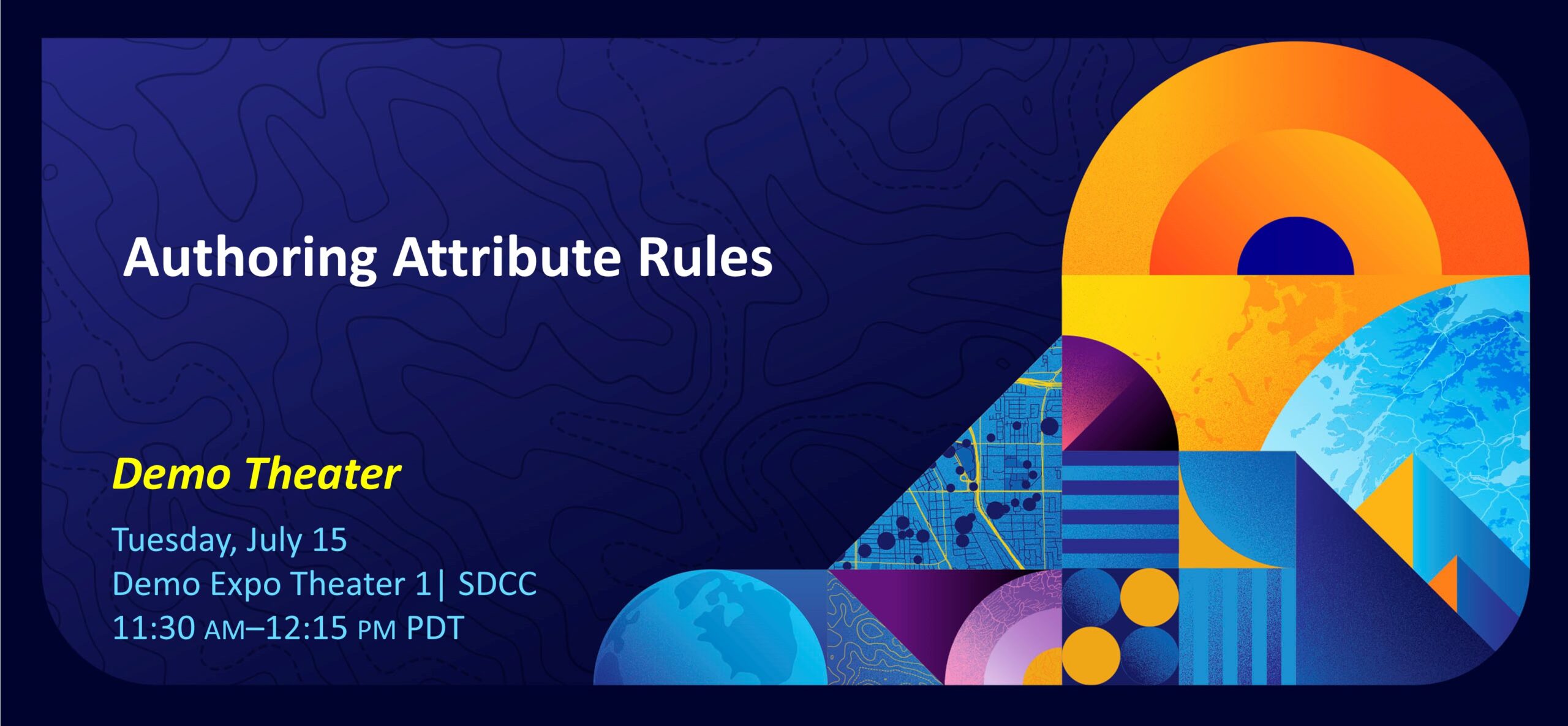
Wishing you had an in-depth guide to attribute rules? If so, then this presentation is for you! Learn all about authoring attribute rules to enhance the editing experience and improve data quality. Starting with the basics of creating simple attribute rules using the Arcade function reference, the speakers then gradually introduce more complex Arcade expressions to develop more comprehensive attribute rules.
Speakers: Hussein Nasser
Supporting materials:
- Attribute rules page – Geodatabase Resources Hub
- Attribute Rules Triggering Fields in ArcGIS Pro 3.4 – blog article
- Attribute rules page – Esri Community
Geodatabases: Generating Schema Reports

Are you looking to analyze, refine, and document your geodatabase design? This presentation shows how to do just that using the Generate Schema Report tool. See firsthand how this tool can provide a comprehensive overview of the geodatabase structure and serve as a useful data-modeling tool for identifying areas of improvement in your geodatabase design.
Speakers: Sean Woodward
Supporting materials:
- Geodatabase schema reports – An introduction – blog article
- Generate a schema report in ArcGIS Pro – video
- Edit schema reports for conversion – blog article
Enterprise Geodatabase: An Overview
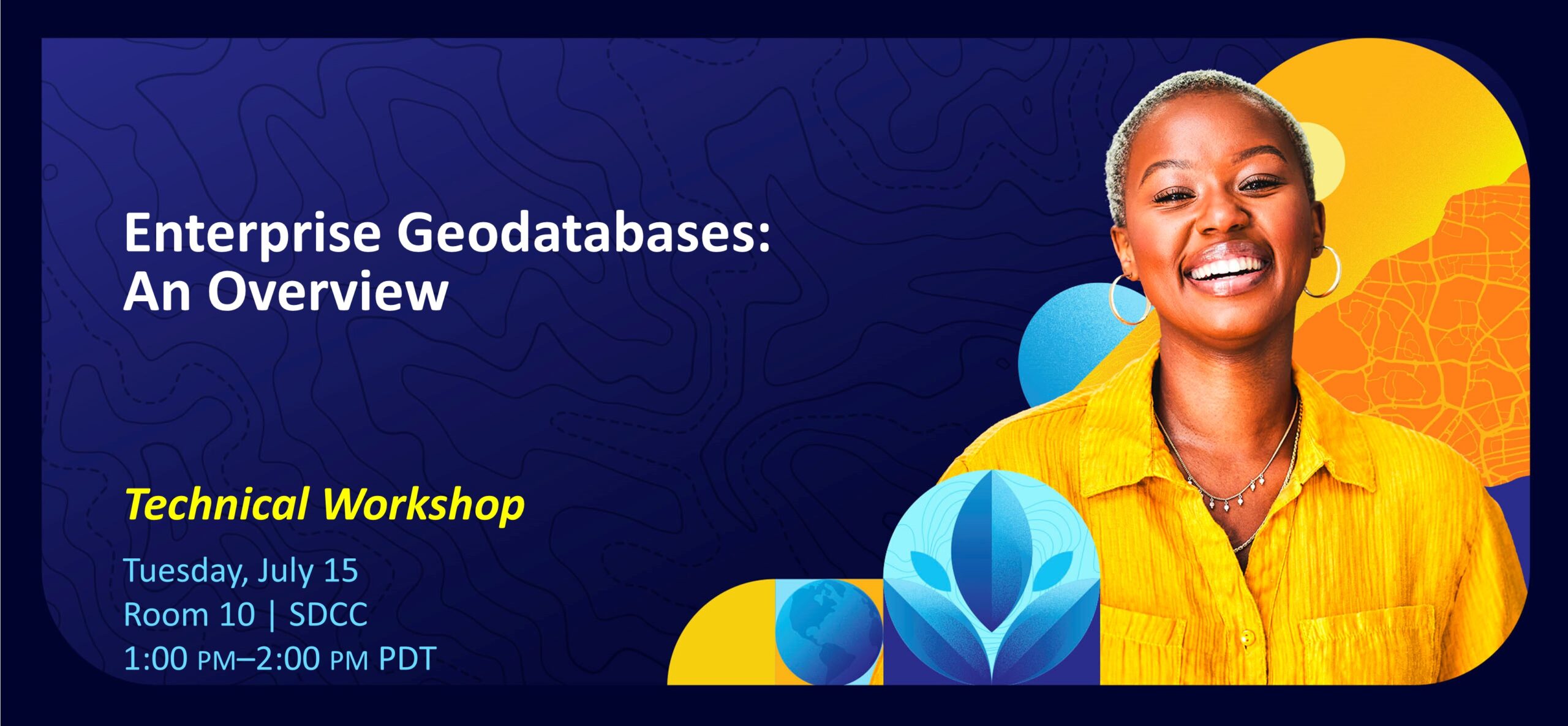
Curious about multiuser enterprise geodatabases? Join us to get an overview of multiuser enterprise geodatabases, including the basics of creating an enterprise geodatabase, loading and securing data, editing, and performing essential administration tasks.
Speakers: Dakota Lowery, Morgan Scanlon
Supporting materials:
- Deploying and Maintaining a Multiuser Geodatabase – instructor led course on Esri Academy
- Deploy an enterprise geodatabase for real estate – tutorial
- Publish data from an enterprise geodatabase – tutorial
- Transfer ownership of enterprise geodatabase domains – blog article
- Restoring SQL Server databases with a new name – blog article
- Create an on-premises PostGIS only geodatabase in PostgreSQL – blog article
- Manage geodatabase upgrades in a service-based architecture – blog article
ArcGIS Data Pipelines: An Overview

Have you heard about ArcGIS Data Pipelines? This new application in ArcGIS Online lets you create, run, and schedule data preparation workflows with a drag-and-drop user interface and no code! The app supports connections to various data sources; tools that blend, build, and integrate datasets; and publication of hosted layer that can be used across your ArcGIS organization. Get acquainted with the app and its key features and be prepared to start streamlining your data integration and preparation workflows with Data Pipelines.
Speakers: Duncan Mackey, Bethany Scott
Supporting materials:
- ArcGIS Data Pipelines – An Overview
- Introduction to ArcGIS Data Pipelines – help documentation
- What’s New in ArcGIS Data Pipelines (February 2025) – blog article
- 2025 Developer & Technology Summit: ArcGIS Data Pipelines – blog article
- Full-Service Real Estate Advisory Firm KBC Advisors Connects Systems and Automates Data Integration from External Systems with ArcGIS Data Pipelines – case study
- ArcGIS Data Pipelines in Action: Real-World Benefits and Tips from a GIS Professional at the City of Cambridge – blog article
- Integrate ArcGIS Data Pipelines with Microsoft Power Automate – blog article
- Join the ArcGIS Data Pipelines Community!
Authoring Attribute Rules
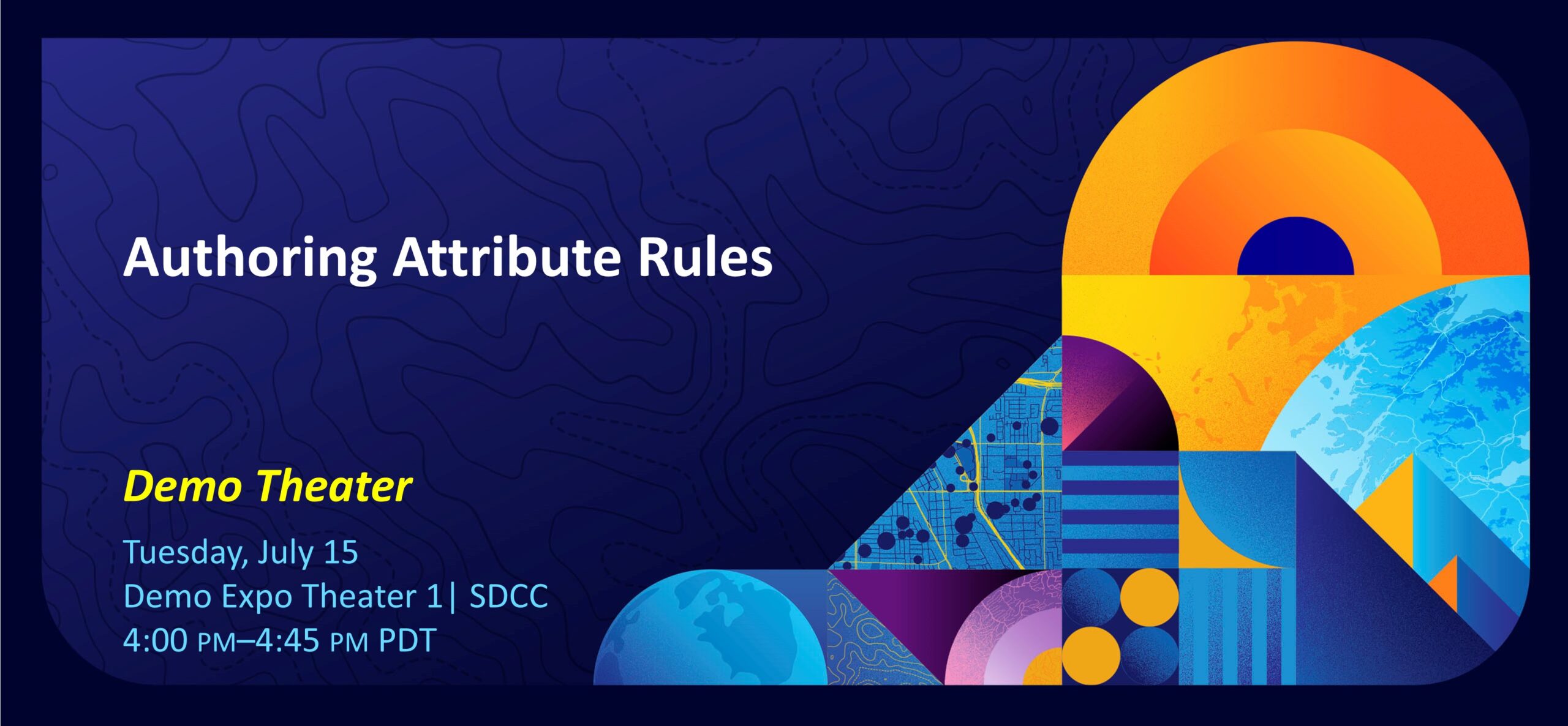
Wishing you had an in-depth guide to attribute rules? If so, then this presentation is for you! Learn all about authoring attribute rules to enhance the editing experience and improve data quality. Starting with the basics of creating simple attribute rules using the Arcade function reference, the speakers then gradually introduce more complex Arcade expressions to develop more comprehensive attribute rules.
Speakers: Hussein Nasser
Supporting materials:
- Attribute rules page – Geodatabase Resources Hub
- Attribute Rules Triggering Fields in ArcGIS Pro 3.4 – blog article
- Attribute rules page – Esri Community
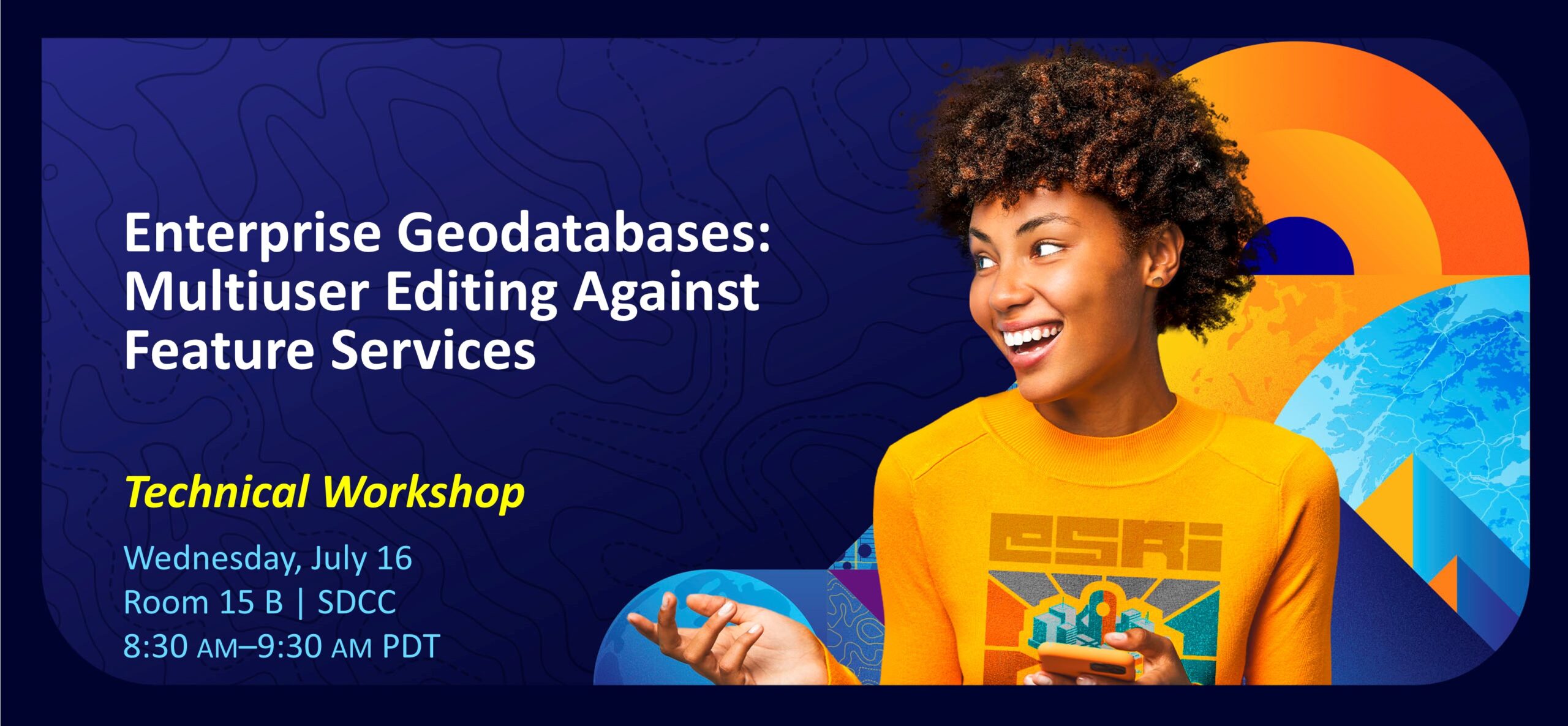
Be sure not to miss this overview of multiuser editing in enterprise geodatabases, including branch versioning and nonversioned archiving. Explore setting up data for short and long transactional editing, sharing data with the organization, and common editing workflows.
Speakers: Diana Muresan, Jillian Penney
Supporting materials:
- Versioning page – Geodatabase Resources Hub
- Take nonversioned data offline – blog article
- Data Management page – Esri Community
ArcGIS Enterprise: Integrating Cloud Services
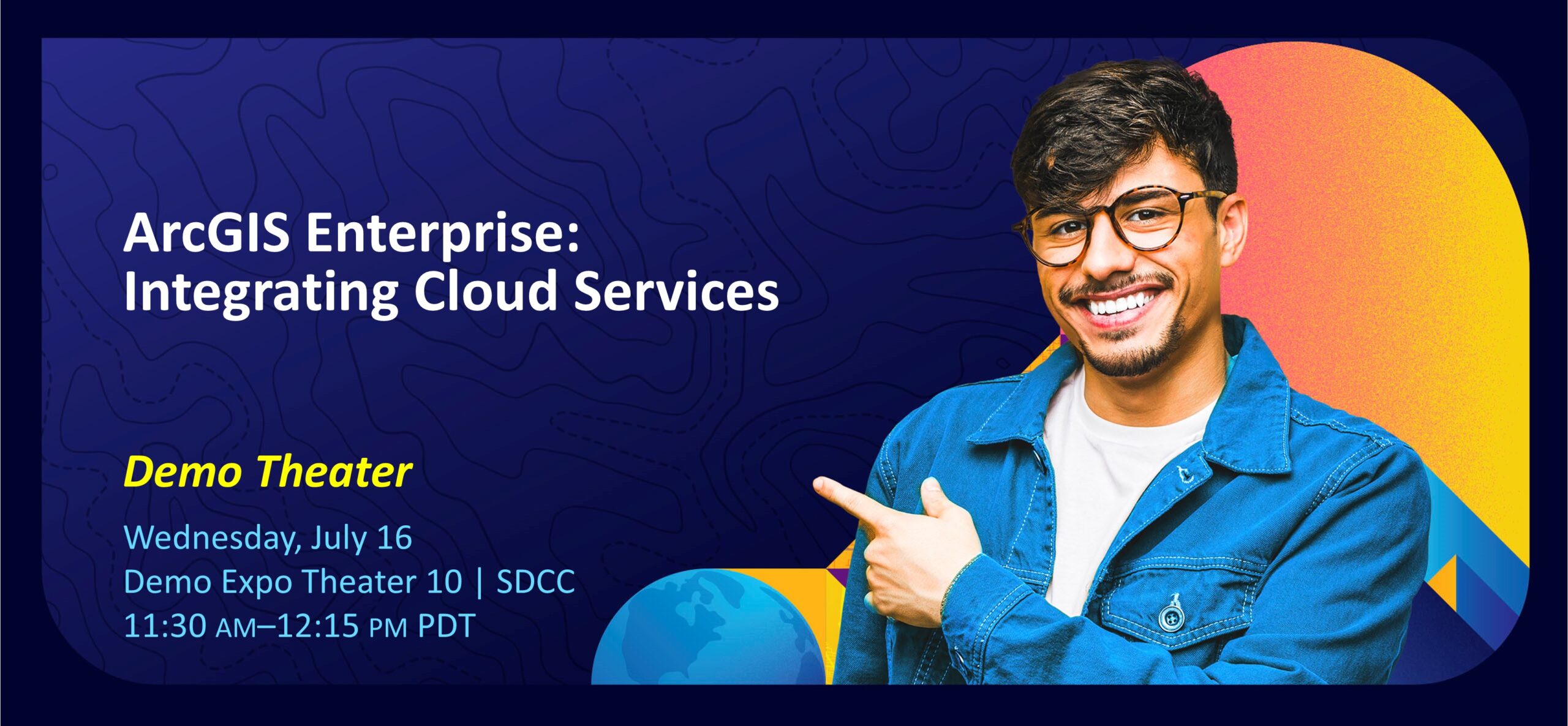
Connect to the cloud services that you need through ArcGIS Enterprise. This presentation explores cloud storage like AWS S3, Azure Storage, and Google Cloud Storage as well as cloud databases, such as AWS Aurora, Azure SQL, and Google Cloud SQL. Get a better understanding of these integration options and how they can benefit you. Speakers also share practical examples to help you get started.
Speakers: Christopher Pawlyszyn, Sarah Hanson
Supporting materials:
- ArcGIS Enterprise in the cloud: Cloud options for ArcGIS
- ArcGIS Architecture Center: Cloud services and providers
- An introduction to query layers – blog article
- Leverage Cloud Data Warehouses with ArcGIS Pro and ArcGIS Enterprise – blog article
- ArcGIS Enterprise page on Esri Community
ArcGIS Data Pipelines: Using Cloud Data Stores in ArcGIS Online
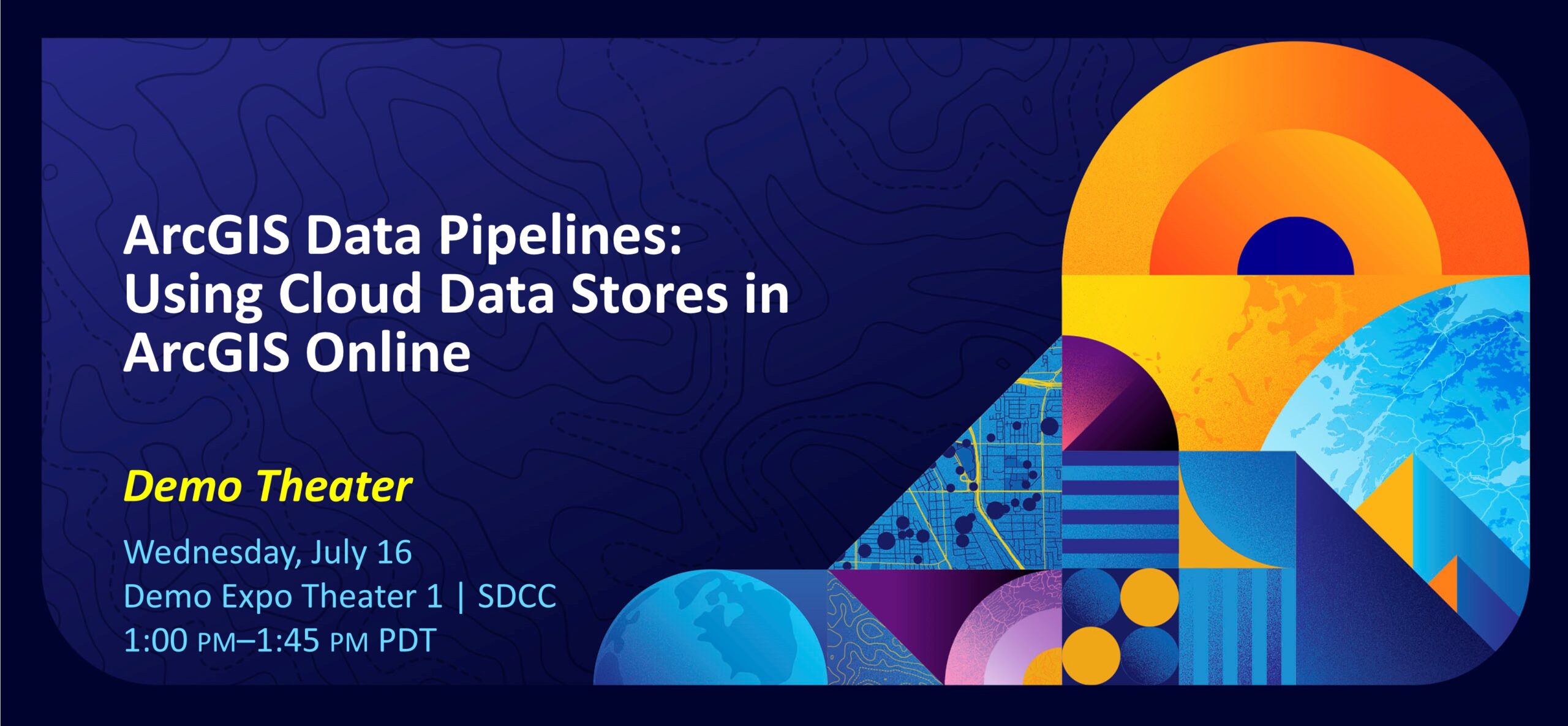
Do you have data stored in cloud data stores like Amazon S3, Microsoft Azure Blob Storage, Google BigQuery, or Snowflake? Learn how to bring your cloud data to ArcGIS Online as hosted feature layers using the new data preparation application, ArcGIS Data Pipelines. In this presentation, speakers show you how to connect to a cloud dataset, prepare the data using a suite of data engineering tools, and write the data as hosted feature layers.
Speakers: Max Payson
Supporting materials:
- ArcGIS Data Pipelines – An Overview
- Introduction to ArcGIS Data Pipelines – help documentation
- ArcGIS Data Pipelines is Now Available – blog article
- ArcGIS Data Pipelines: Empowering Developers for Data Engineering – technical session
- What’s New in ArcGIS Data Pipelines (February 2025) – blog article
- Join the ArcGIS Data Pipelines Community!
Enterprise Geodatabase: Demonstrating Branch Versioning Workflows
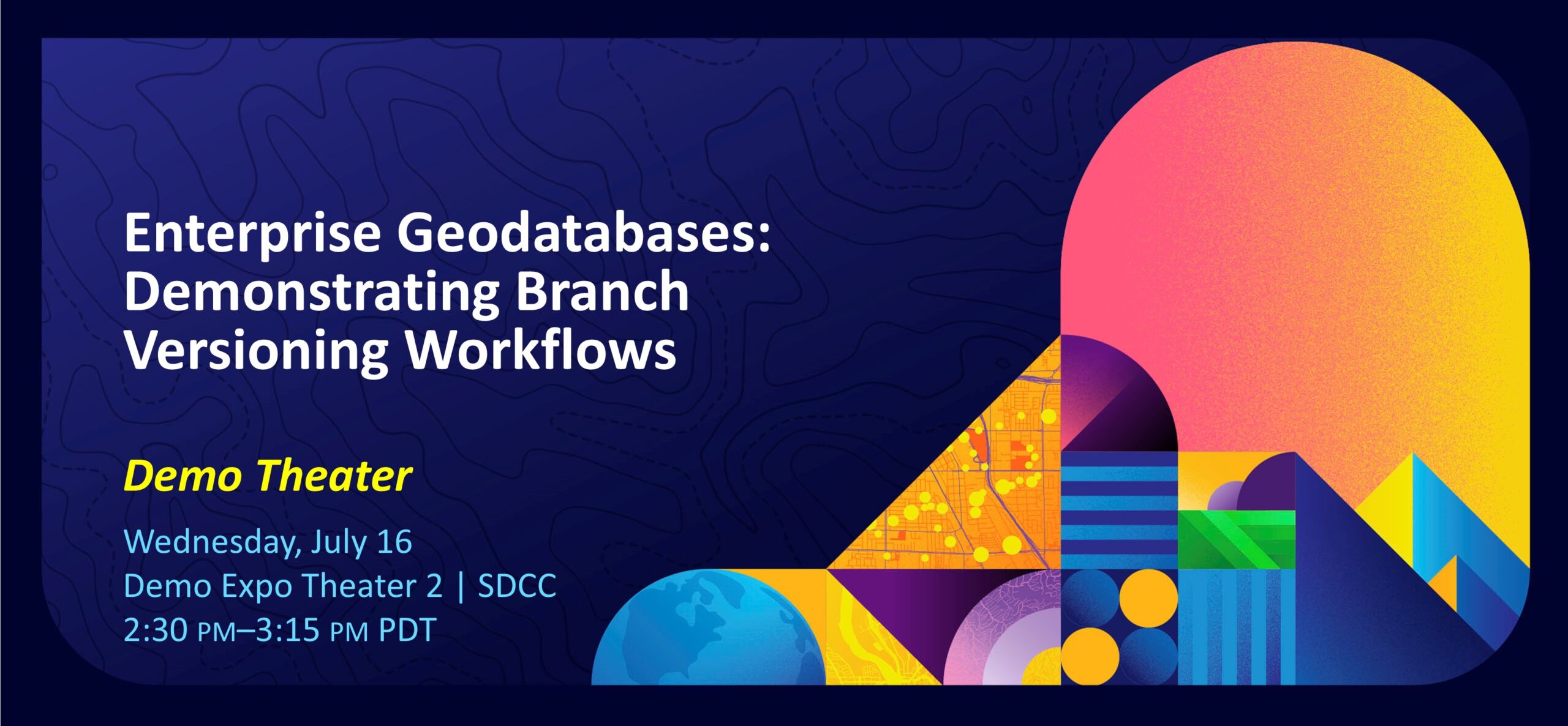
Interested in branch versioning? This presentation explores versioning management workflows related to branch versioning using ArcGIS Pro, ArcGIS Enterprise, and the REST API. Join us to see the following workflows (and more) in action: creating and deleting versions, editing named versions, changing version ownership, reconciling, and posting versions.
Speakers: Jillian Penney
Supporting materials:
- Versioning page – Geodatabase Resources Hub
- Data Management page – Esri Community
ArcGIS Field Maps and ArcGIS Pro: Distributing Data with Feature Service Sync
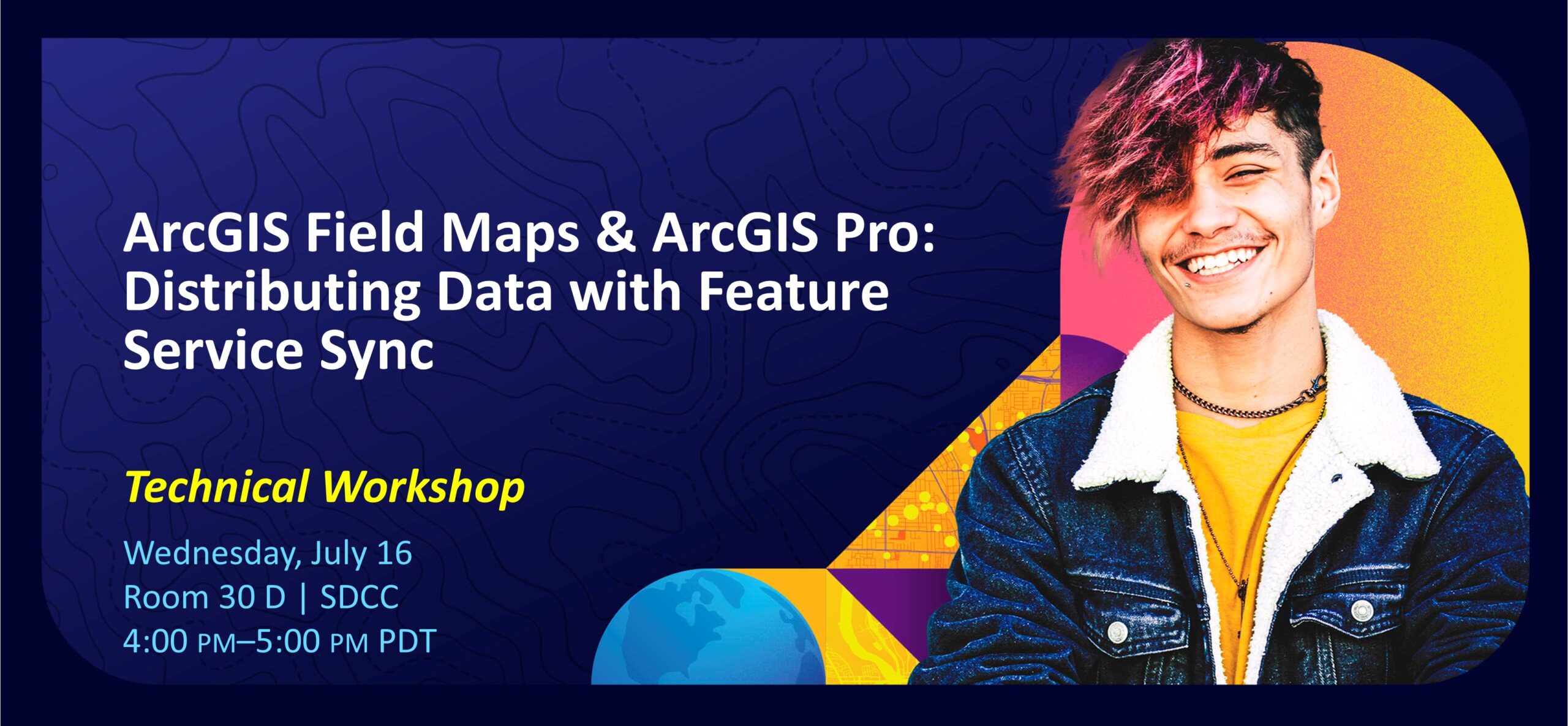
Whether you are new to distributing data or have prior experience, this presentation has something for you. Join us to discover how to use the feature service sync capability in ArcGIS and learn various data synchronization workflows using ArcGIS Field Maps and ArcGIS Pro.
Speakers: Gaurav Maske, Gary MacDougall
Supporting materials:
- Prepare feature services for offline use – help documentation
- Work with offline maps and branch versioned data – help documentation
- Feature service sync with branch versioning – demo video
- Offline maps and traditional versioned data – help documentation
- Create replica – developer documentation
- Synchronize Replica – developer documentation
- ArcGIS Enterprise page – Esri community
- One-way feature service-to-feature service sync – blog article
- Manage replicas in ArcGIS – blog article
Troubleshooting Feature Service Sync Workflows

Looking to streamline your workflows and maximize data synchronization efficiency? This presentation explores troubleshooting data distribution workflows and offline sync optimization with enterprise geodatabases. Learn how to use various tools to diagnose issues related to feature service sync processes, including offline map areas, and gain practical insights into enhancing performance.
Speakers: Rachel Desmond, Christine Mcclelland
Supporting materials:
- Manage replicas in ArcGIS – blog article
- ListReplicas function – help documentation
- Obtaining various logs for your Enterprise GIS – blog article
- Work with offline maps and branch versioned data – help documentation
- Take branch versioned data offline with feature service sync capability – blog article
- Configure a web feature layer – help documentation
- Prepare feature services for offline use – help documentation
ArcGIS Data Pipelines: An Overview
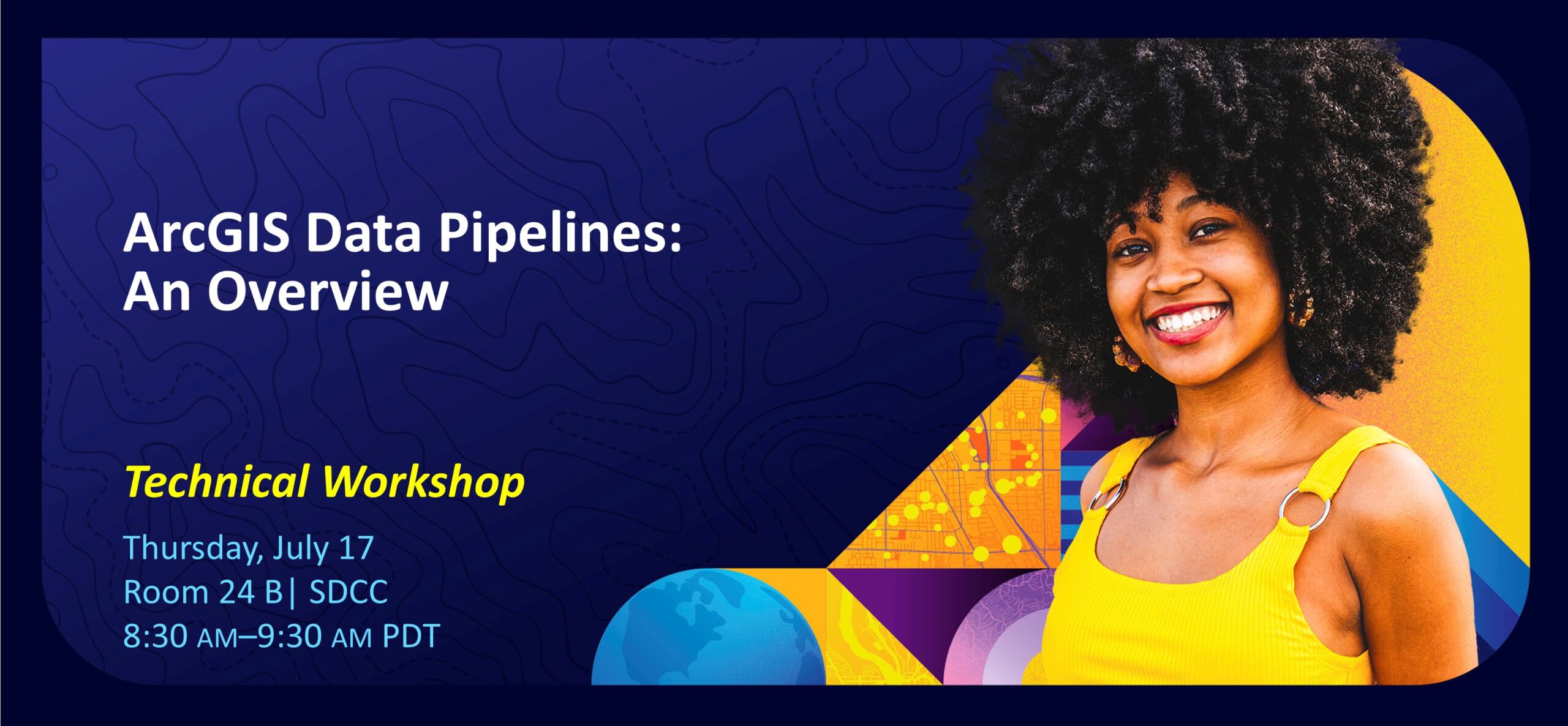
Have you heard about ArcGIS Data Pipelines? This new application in ArcGIS Online lets you create, run, and schedule data preparation workflows with a drag-and-drop user interface and no code! The app supports connections to various data sources; tools that blend, build, and integrate datasets; and publication of hosted layer that can be used across your ArcGIS organization. Get acquainted with the app and its key features and be prepared to start streamlining your data integration and preparation workflows with Data Pipelines.
Speakers: Duncan Mackey, Bethany Scott
Supporting materials:
- ArcGIS Data Pipelines – An Overview
- Introduction to ArcGIS Data Pipelines – help documentation
- What’s New in ArcGIS Data Pipelines (February 2025) – blog article
- 2025 Developer & Technology Summit: ArcGIS Data Pipelines – blog article
- Full-Service Real Estate Advisory Firm KBC Advisors Connects Systems and Automates Data Integration from External Systems with ArcGIS Data Pipelines – case study
- ArcGIS Data Pipelines in Action: Real-World Benefits and Tips from a GIS Professional at the City of Cambridge – blog article
- Integrate ArcGIS Data Pipelines with Microsoft Power Automate – blog article
- Join the ArcGIS Data Pipelines Community!
Enterprise Geodatabase: Multiuser Editing Against Feature Services
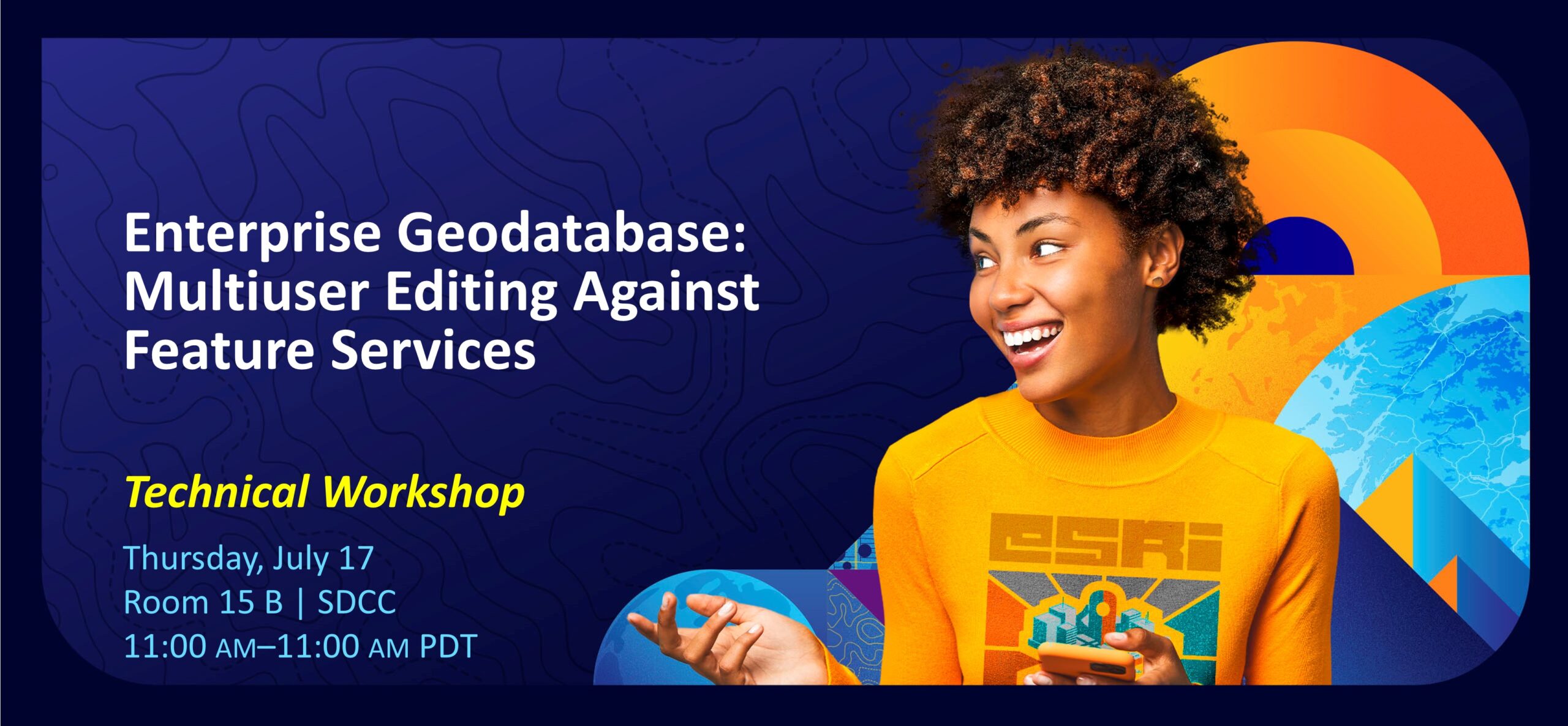
Be sure not to miss this overview of multiuser editing in enterprise geodatabases, including branch versioning and nonversioned archiving. Explore setting up data for short and long transactional editing, sharing data with the organization, and common editing workflows.
Speakers: Diana Muresan, Jillian Penney
Supporting materials:
- Versioning page – Geodatabase Resources Hub
- Take nonversioned data offline – blog article
- Data Management page – Esri Community
Enterprise Geodatabase: Performance Troubleshooting

Does your enterprise geodatabase performance have you feeling down? Learn various troubleshooting techniques for working through performance-related issues with enterprise geodatabases, maps, and feature services. Review real-world performance scenarios and how they were resolved through troubleshooting and learn about tools that you can use to troubleshoot cases in your own organization.
Speakers: Jim McAbee, Raymond Bunn, Marlon Amaya
Supporting materials:
>Click here to access database related materials
- The ArcGIS Architecture Library – help documentation
- What is the EGDBHealth Report? – blog article
- Troubleshooting Performance Issues in ArcGIS Pro – blog article
- ArcGIS Pro: Diagnostic Monitor – ArcGIS Pro documentation
- Diagnose ArcSDE connection and performance with SDEINTERCEPT – Esri technical paper
- ArcGIS clients and DBMS upgrade considerations – blog article
- Prune branch history in ArcGIS Pro 3.5 – help documentation
- Attribute Rules Triggering Fields in ArcGIS Pro 3.4 – blog article
- Prune branch history in ArcGIS Pro 3.5 – help documentation
- Introduction to the Prune Branch History tool – blog article
>Click here to access services related materials
- Configure Service Instance Settings – help documentation
- Optimizing ArcSOC Availability and Utilization –blog article
- ArcGIS Enterprise Analysis with System Log Parser’s Optimized Analysis Type – blog article
- Monitoring web service requests using Fiddler – technical support blog
- Troubleshoot map service performance with server logs – ArcGIS Enterprise documentation
- ArcGIS Enterprise Systems and Network Transport Time – Esri technical paper
- Utility Network Properties Extractor – blog article
- Troubleshoot attribute rule behavior with ArcGIS Diagnostic Monitor and ArcGIS Enterprise Server log files – technical article
- Soccer: ArcSOC scanner utility – GitHub page
Geodatabases: Generating Schema Reports
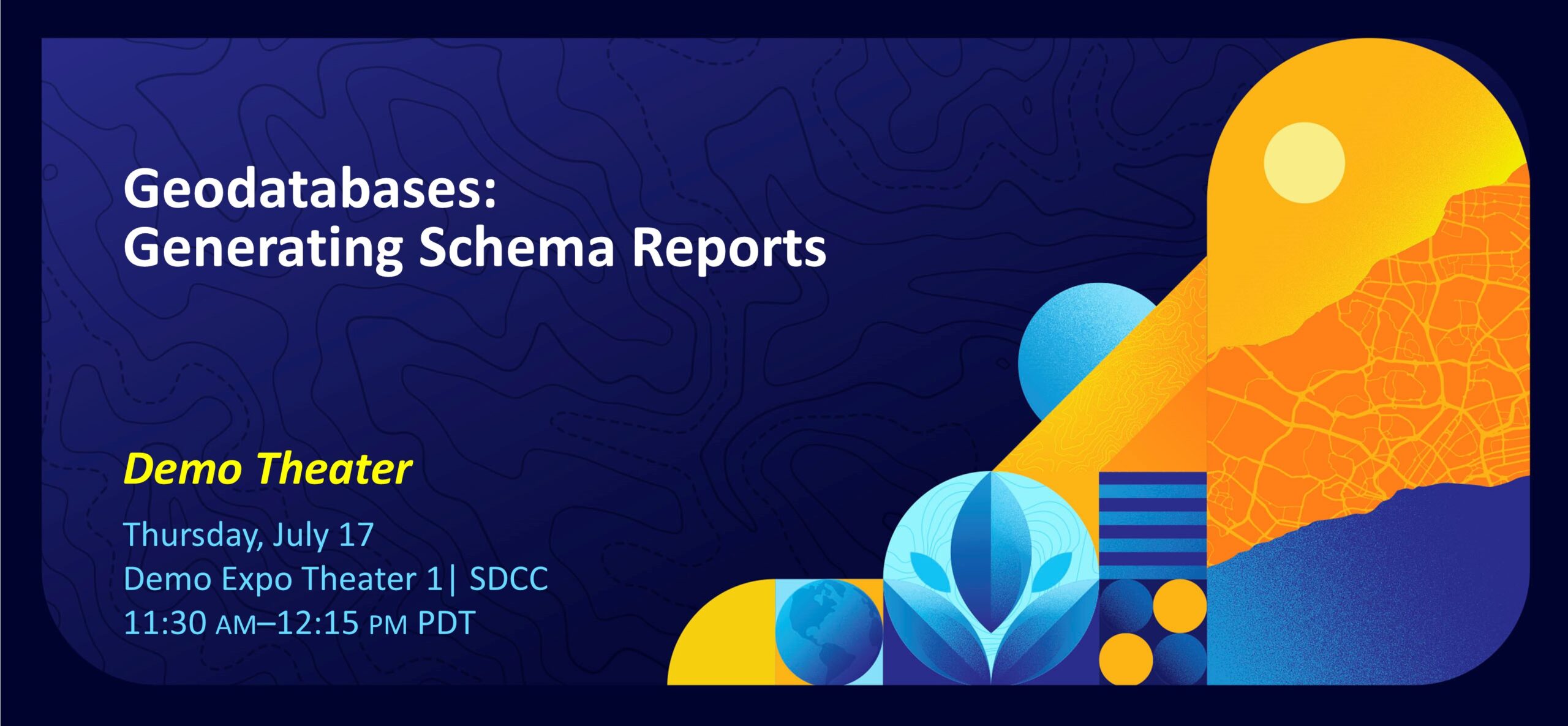
Are you looking to analyze, refine, and document your geodatabase design? This presentation shows how to do just that using the Generate Schema Report tool. See firsthand how this tool can provide a comprehensive overview of the geodatabase structure and serve as a useful data-modeling tool for identifying areas of improvement in your geodatabase design.
Speakers: Sean Woodward
Supporting materials:
- Geodatabase schema reports – An introduction – blog article
- Generate a schema report in ArcGIS Pro – video
- Edit schema reports for conversion – blog article
ArcGIS Enterprise: Data Storage Strategies
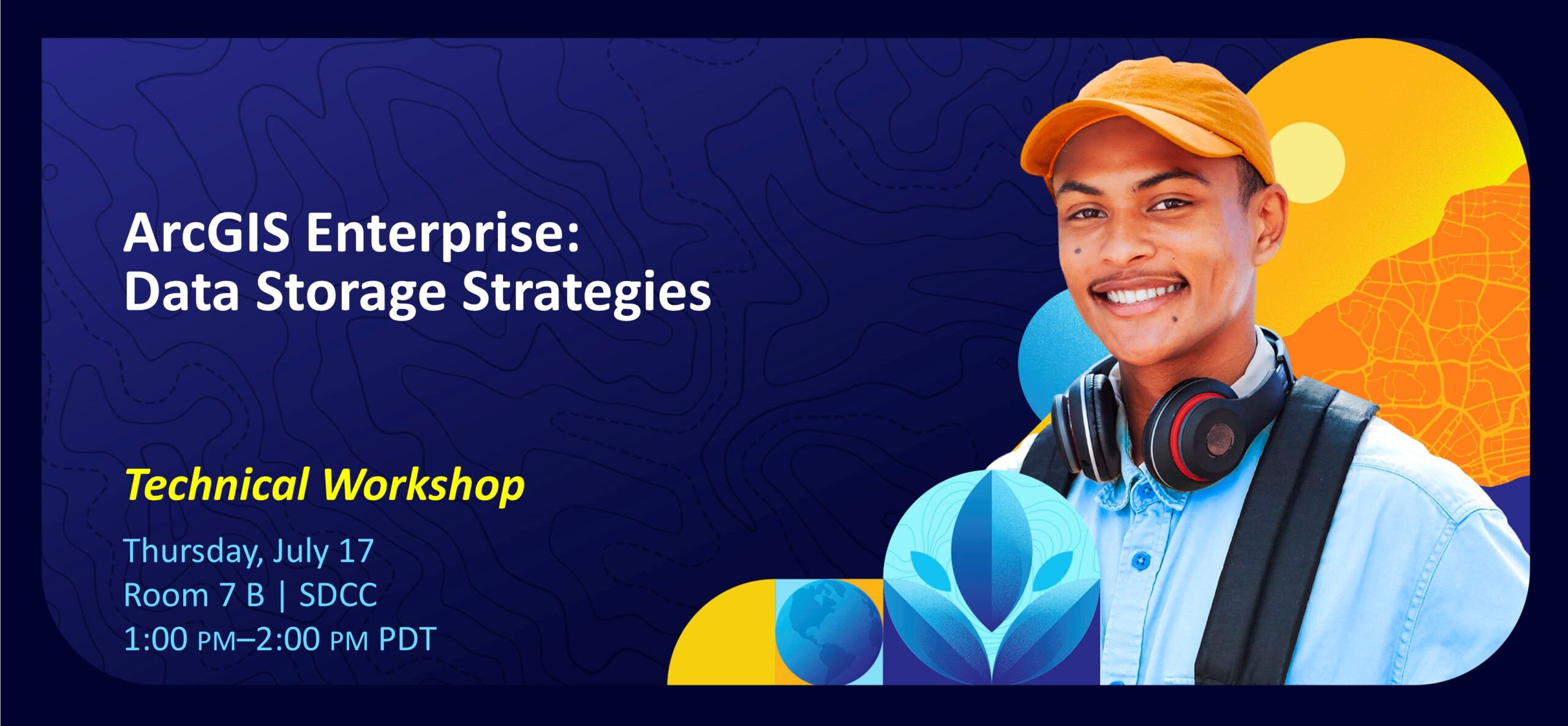
Data is an integral part of ArcGIS, providing the foundation for your mapping, analysis, and decision-making workflows. Where you store your data impacts how you access, edit, validate, secure, and scale it. This presentation highlights the storage options that are available in ArcGIS, from ArcGIS Data Store and enterprise geodatabases to cloud storage and cloud data warehouses. Get a high-level understanding of the data storage landscape in ArcGIS Enterprise and how you can use these different storage options in your own organization.
Speakers: Nana Dei, Sarah Hanson
Supporting materials:
- Portal for ArcGIS: Data and publishing in ArcGIS Enterprise – help documentation
- ArcGIS Enterprise: Data Stores – help documentation
- Content management techniques for your ArcGIS Enterprise portal – Esri technical paper
- ArcGIS clients and DBMS upgrade considerations – blog article
- Manage geodatabase upgrades in a service-based architecture – blog article
- ArcGIS Enterprise: Migrate to the object store – blog article
- Ten ways to integrate data with ArcGIS Enterprise – blog article
- ArcGIS Enterprise and cloud migration – help documentation
Enterprise Geodatabase: Demonstrating Branch Versioning Workflows
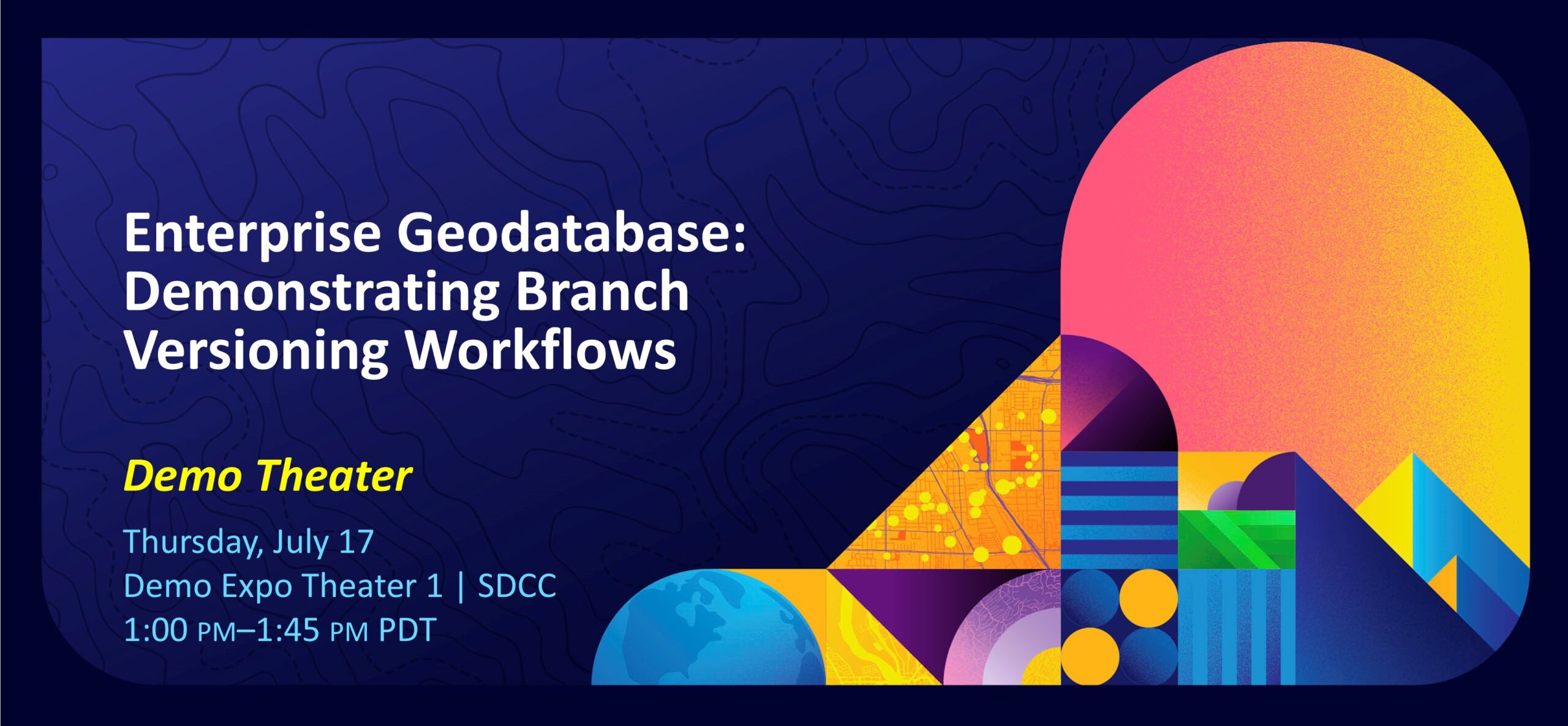
Interested in branch versioning? This presentation explores versioning management workflows related to branch versioning using ArcGIS Pro, ArcGIS Enterprise, and the REST API. Join us to see the following workflows (and more) in action: creating and deleting versions, editing named versions, changing version ownership, reconciling, and posting versions.
Speakers: Jillian Penney
Supporting materials:
- Versioning page – Geodatabase Resources Hub
- Data Management page – Esri Community
Using Logs and Diagnostic Tools to Troubleshoot Feature Services

Daunted by trying to identify the source of errors in workflows using an enterprise geodatabase and feature services? This presentation explores how to collect and analyze various logs. Gain insight into using these ArcGIS logs and DBMS (database management system) traces to troubleshoot and correct unexpected behaviors, empowering you to streamline operations and enhance system reliability.
Speakers: Joseph Ayers-Irusota, Jordan Sabacher
Supporting materials:
- Set up intercept log files on a machine running ArcGIS Pro or ArcMap – technical article
- Understand organization logs – help documentation
- Work with organization logs – help documentation
- Server logs codes – help documentation
- Work with server logs – help documentation
- ArcGIS Pro Diagnostic Monitor – help documentation
We can’t wait to welcome you to the 2025 Esri User Conference! Whether you’re planning your schedule, exploring new tools, or just excited to connect with the community, we hope this guide helps you get the most out of your time in San Diego. Be sure to stop by the Geodatabase area at the Expo to say hello—we’d love to hear about your work, answer your questions, and help you discover what’s new. Safe travels, and see you soon!




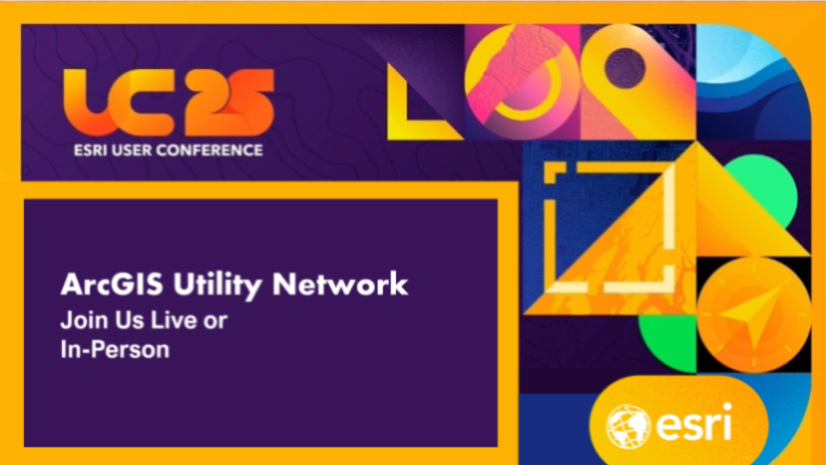
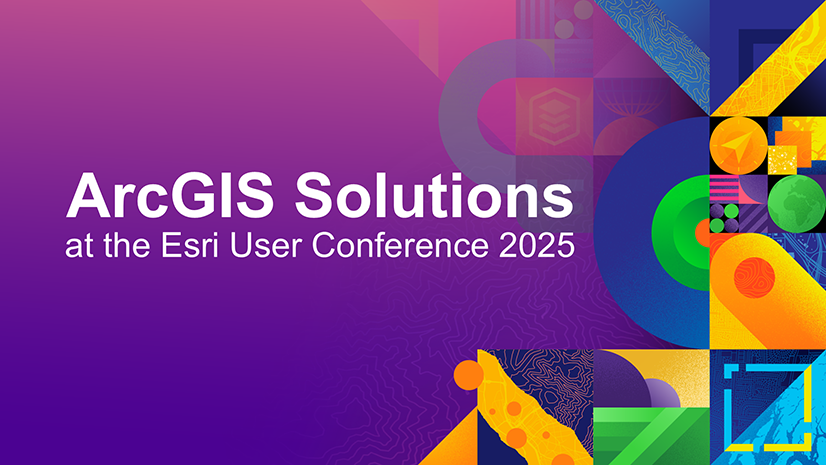
Commenting is not enabled for this article.